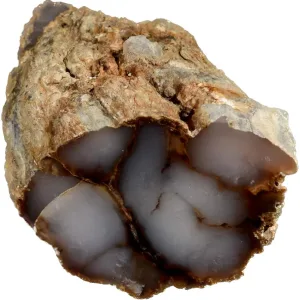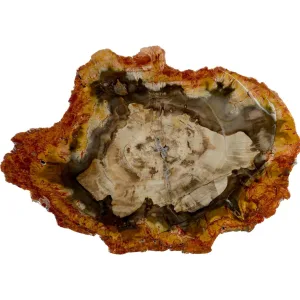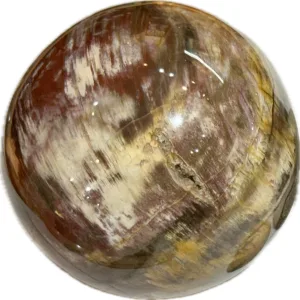Petrified wood is a fascinating geological phenomenon formed when wood becomes fossilized through a process called permineralization. This occurs when organic material such as fallen trees or branches is buried beneath layers of sediment and protected from decay by an absence of oxygen. Over time, mineral-rich groundwater permeates the wood’s cellular structure, replacing organic matter with minerals such as silica, quartz, or calcite. This gradual replacement process preserves the wood’s original structure on a microscopic level, resulting in a remarkably detailed and durable fossil.
Petrified wood typically exhibits a range of colors, textures, and patterns, depending on the types of minerals present and the environmental conditions during fossilization. Common hues include various shades of brown, red, yellow, and gray, with intricate patterns resembling wood grain often visible to the naked eye.
These fossilized remnants provide valuable insights into ancient ecosystems, offering clues about past climates, vegetation, and geological processes. Petrified wood is prized by collectors, scientists, and enthusiasts alike for its beauty, rarity, and scientific significance.



